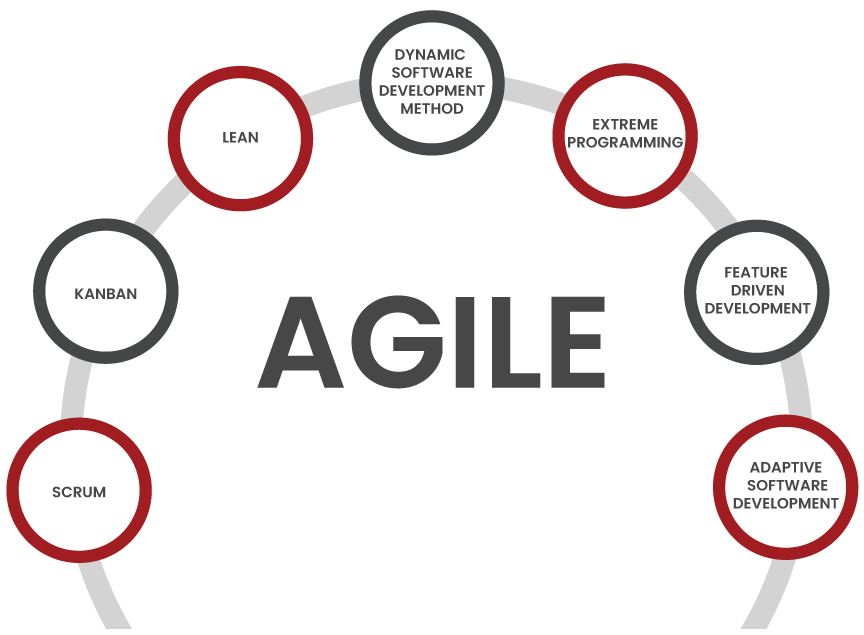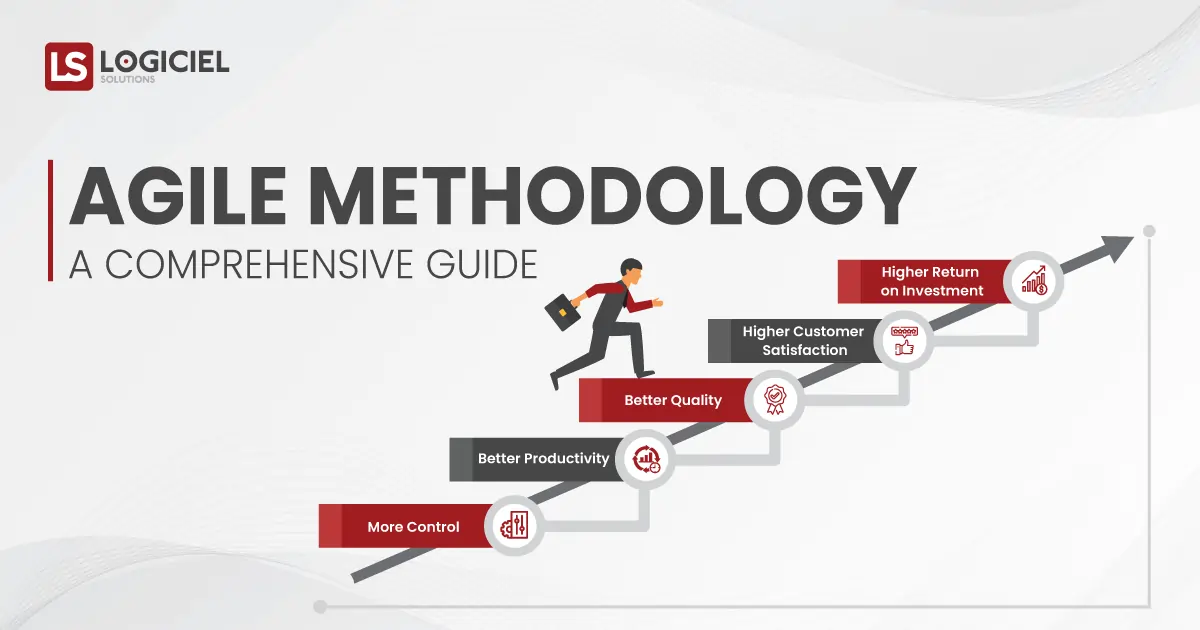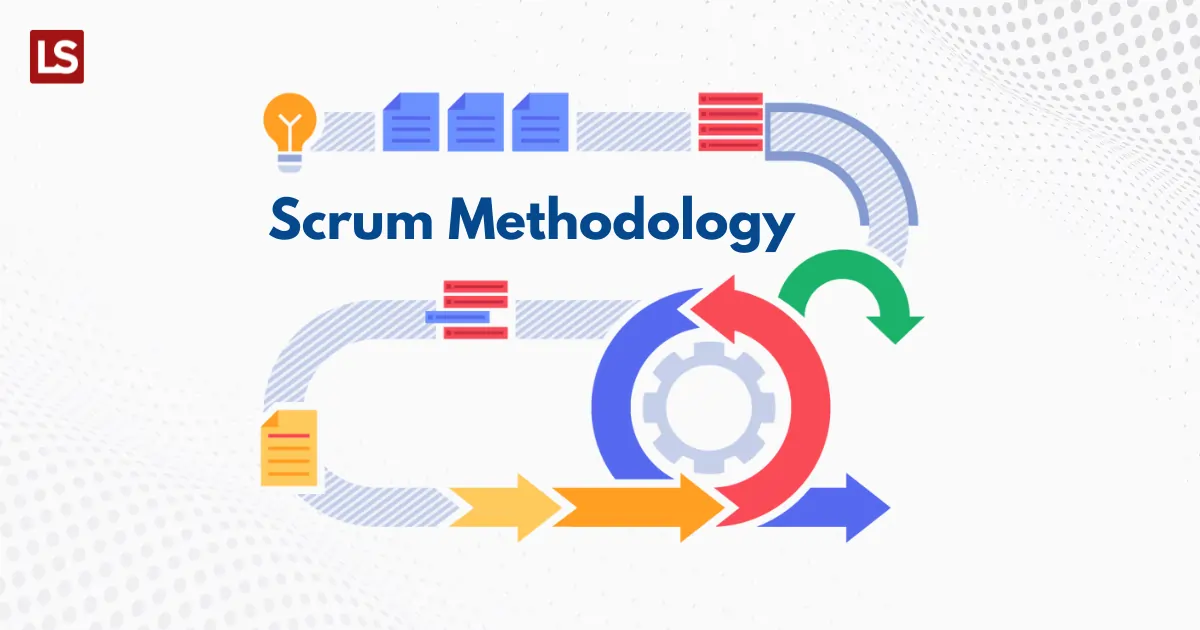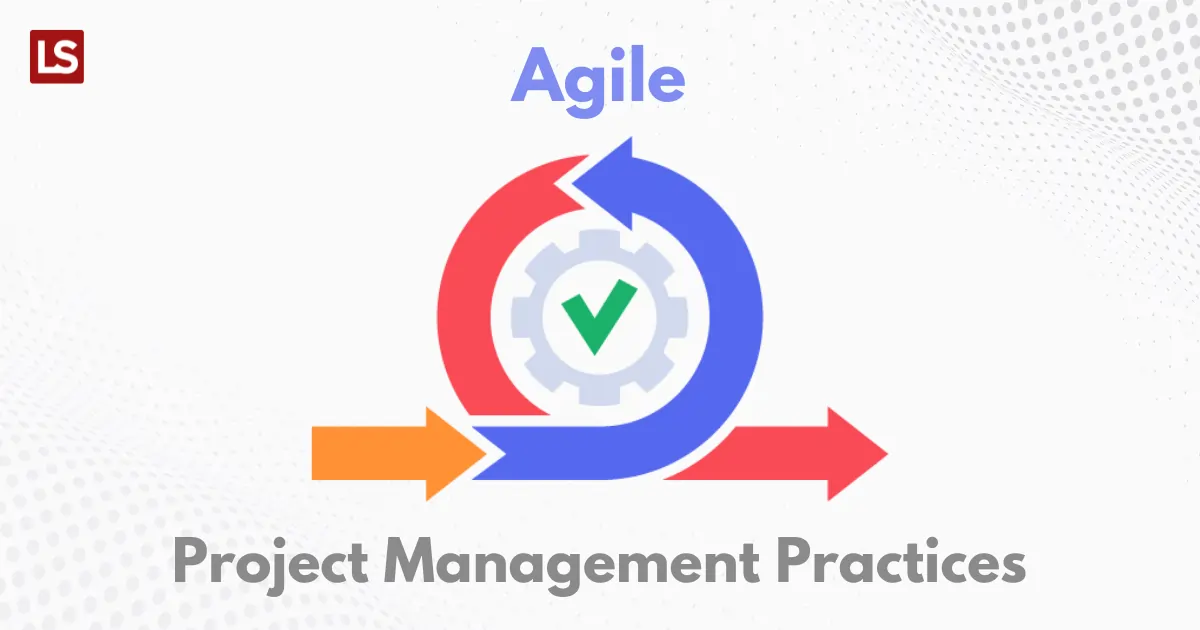But what if the organizations get something that is equally evolutionary as Agile – there has been a surge in adopting Agile since 2015 owing to the flexibility it provides.
Overview
Project completion is emphasized through incremental and iterative processes in the Agile project management methodology. Short-term development cycles are used to carry out a project’s incremental components. It enables teams to have a built-in system for faster adaptation to change. It can be viewed as an iterative procedure as opposed to preparing and hanging on for a major release.
This guide shall help those who are in dilemma and are afraid to pick Agile methodologies for their next software/project.
History Of Agile Methodologies
A group of software developers created a new method of software development to accelerate the development process and provide the program to the market as soon as possible.
In 2001, 17 technologists created the Agile Manifesto, which served as the official beginning of Agile. All 17 engineers were focused on developing a rapid, adaptable, and team-oriented methodology, thus they came up with the complete Agile project management Manifesto to figure out new ways to create software.
It was designed to enhance and streamline the development process and find and fix errors and problems quickly.
How Agile Works
Similar to a mini-project having a pre-determined scope of work with backlog, design, development, testing, and deployment phases. Agile uses cycles of sprints, and inside each sprint, some issues are separately created, built, and tested.
The method is iterative because the program is created with ongoing feedback, allowing for flexibility in adding or changing anything to the requirements. Agile’s guiding philosophy is to make sure that altering current requirements don’t influence the project’s delivery or relevance.
To proceed, the requirements are written down as user stories, along with a precise description of what the user expects from the product. Additionally, these are added to the backlog and given priority before being given to the development team.
This mostly consists of epics, stories, tasks, and subtasks with an expected number of story points that can be completed during each iteration or sprint. To time-box the work and keep everything on schedule, the duration is always predetermined.
Now comes the development, one of the longest of all phases as it carries all the major work. As the development team will start working on combining all the requirements of the product gathered in the concept and inception phase. It goes under several reviews and revisions for improvement until finalized.
After development is done, the sprint is tested. During the QA process, the quality assurance team runs various tests to assure the functionality of the software. It’s the responsibility of QA to make sure if there are any potential errors or bugs, they are to be opened and addressed by the development team in the same sprint for timely releases. Once the quality assurance team approves, a possibly shippable product enters the market, is used by end users, and has a chance of receiving feedback, which Agile is willing to accept. Users can easily and practically suggest adjustments and that feedback is introduced to make the product fit their needs.
Key Agile Methodologies

Scrum/Agile scrum methodology
There is no doubt that Scrum is the Agile Methodology’s preferred and most popular framework. The product backlog is kept up to date, and projects are finished in sprints. The objective is to finish all of the jobs within the allotted time frame of two weeks.
The daily standup meeting, which lasts 15 to 20 minutes, is the first step in the agile scrum methodology process. During this meeting, the team becomes coordinated and begins to plan the workday as efficiently as possible. Additionally, it enables everyone to monitor sprint progress.
More about agile scrum methodology is detailed in my previous article on scrum. Click here
Kanban
This is another popular Agile development style that uses column representation to show the work in progress. Typically, the columns read To Do, In Progress, and Done. Nevertheless, it is adaptable to particular team dynamics. Companies that produce software often use virtual boards like Asana and Trello. Furthermore, platforms like Trello and Jira are widely used throughout the world.
Cards on kanban boards reflect the numerous concerns that need to be worked on. These cards include important details about each work item, including the content, attachments, due date, code, etc.
Measuring cycle times makes it simple for managers to monitor the effectiveness and development of the work. This way of operation is employed by many large corporations, including Spotify, Pixar, and Toyota.
Lean
A collection of guidelines and methods is known as lean-agile. Lean Agile’s main objective is to maximize value and reduce waste. Eliminating any functionality that isn’t useful is the main goal. It is best to minimize switching tasks to improve team morale and boost productivity.
There are many important and popular tools of lean for adding quality.
- Test-Driven Development
- Pair Programming
- Code Review
- Refactor Code
DSDM (Dynamic systems development method)
This is an agile project delivery framework that first came about in 1994 and was, at that time, used for software development. This could be considered as an improvement on Rapid Application Development (RAD). The focus of DSDM is to help professionals work more effectively as a cohesive team, striving to achieve a common business objective or goal. It’s also vendor-independent, meaning any technical environment or business can use it without having to rely on access to specific techniques and tools. However, there are several techniques you can implement to improve the efficiency of the methodology.
Advantages
- You can deliver projects on time, while still benefiting from a flexible workflow
- It’s easy for everyone within the business to understand how the project is progressing
- The DSDM model prioritizes business cases, ensuring that any projects they deliver have critical business value
- You can provide basic product functionality at a rapid pace
- Developers can easily access their end-users
- Easier for the project to remain within budget
- Developments and progression occur quickly
Disadvantages
- Sometimes there are large management overheads
- Can be impractical for small companies since implementation can be costly
- DSDM doesn’t encourage developer creativity
- Projects follow a specific standard, even if other more sophisticated options are available
Goals
There are a few key goals to consider if you want to use DSDM, including:
- Improving the project development process, optimizing for speedy product deliveries
- Increasing user and stakeholder engagement throughout the process
- Improving the performance of the team, ensuring they produce high-quality work on time
XP (Extreme Programming)
Extreme programming is a software development methodology that’s part of what’s collectively known as agile methodologies. From small to mid-sized teams producing high-quality software, XP helps to adapt, evolve and change requirements. In the XPM methodology, the plan, budget, and deliverables can be modified according to the changing needs no matter how much work has been done on the project. It puts much emphasis on good programming practices.
Exceptionally XP emphasizes the technical aspects of software development. In a nutshell, it’s about good practices taken to an extreme. Be it pair programming, testing early etc.
This improves software quality and responsiveness. Extreme programming takes out the best practices that have worked well in the past in program development projects to extreme levels. Some of the good practices that have been recognized in the extreme programming model and suggested to maximize their use are mentioned below:
Code Review: Code reviewing is done to detect and correct errors efficiently. As pair programming is done, similarly reviewing of written code is carried out by a pair of programmers who switch their works between them every hour.
Testing: XP follows test-driven development (TDD) that thrust on continually writing and executing test cases. In the TDD approach test cases are written even before any code is written.
Incremental development: Incremental development helps in getting feedback to further help development teams to provide new increments after every iteration. Some other practices involve simple yet good code, good designs, integration testing etc.
FDD (Feature-Driven Development)
Feature-Driven Development, is a framework in the Agile methodology. As the name implies, it gives attention on developing software with features that fulfills client needs. FDD aims to ensure regular and on-time delivery to customers where reporting is done at all levels that further helps to have a close watch over the progress and results.
FDD is a favorite method among development teams as it removes: Confusion and rework. During FDD, a feature takes around 2-10 days – which differs from the agile scrum methodology, having sprints that typically last two or sometimes four weeks. Teams using all Agile methodologies operate with the primary goal of quickly and effectively satisfying the needs of their customers; FDD is no exception.
ASD (Adaptive Software development)
This is a shorter-interval version of the Rapid Application Development (RAD) agile framework. Definitely a direct outgrowth of it. It aims to enable teams to quickly and effectively adapt to changing requirements or market needs by evolving their products with lightweight planning and continuous learning. The ASD approach encourages teams to develop according to a three-phase process i.e. speculate, collaborate, and learn.
Agile Manifesto Principles
- Customer satisfaction is our first focus, and we achieve this through timely and consistent delivery of high-quality software.
- Recognize changing needs, even late in the development process. Agile techniques harness change for the competitive advantage of the consumer.
- Deliver functional software regularly, preferably within a few weeks rather than a few months.
- Throughout the project, business people and developers must collaborate every day.
- Build initiatives around motivated people. Trust them to complete the task and provide them with the environment and assistance they require.
- Face-to-face communication is the most productive and efficient way to share information with a development team.
- Progress is mostly measured by usable software.
- Sustainable development is promoted through agile methodologies. It should be possible for the sponsors, developers, and users to continue at the same pace indefinitely.
- Agility is improved through constant focus on technical perfection and smart design.
- The art of simplicity is crucial.

- Self-organizing teams produce the greatest architectures, specifications, and designs.
- The team adapts and modifies its behavior in response to periodic reflections on how to be more effective.
Benefits to everyone involved in software development
Benefits to Customer
In contrast to the waterfall approach, the features are built significantly faster. Fulfilling more requests helps to gain the customer’s confidence and trust. Customers believe that the development team is more responsive and able to provide worthwhile goods quickly when Agile principles are used.
Benefits to Vendors
There is a strong emphasis on creating and delivering high-value features while minimizing waste. The time it takes to get these deliverables to market is ultimately shortened. Overall, this results in happier customers and improved retention, which further attracts more referrals.
Benefits to Development Teams
It wouldn’t be any different for developers, who would recognize the worth and utility of their work. Additionally, the Agile approaches shorten the development process, increase efficiency, and guarantee that the team has enough time to finish the given issues, such as a sprint.
Benefits to Product Managers
Product managers and owners may readily align tasks with the aid of agile scrum methodology, which also provides the opportunity to adjust to changes in requirements or reorder tasks in order of importance. Agile does make it easier to match user needs with development tasks.
Benefits to Project Managers
Because there are so many different types of reports accessible, it is quite simple for managers to concentrate on the progress of a task. Burndown charts, specifically for scrum, show the progress. Planning and tracking in Agile are much more precise and simpler than in any other earlier procedures, regardless of whether the planners are project managers or Scrum Masters.
The usage of burndown charts greatly aids in displaying the overall condition of the sprint and further aids in process optimization by drawing lessons from earlier sprints.
Conclusion
Agile’s helps businesses develop software more quickly. It is worthwhile using an Agile method for any of your projects due to the plethora of advantages it offers. It raises the standard of team spirit and customer satisfaction along with increasing the level of software development.




